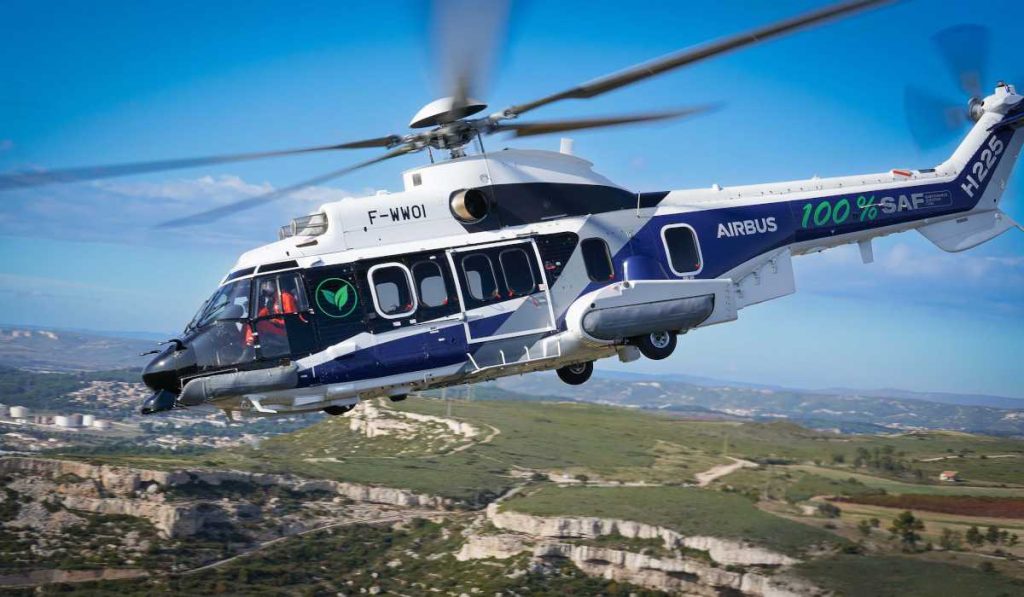
News
Fuel
Helicopters
First Airbus helicopter flight with 100% SAF
November 11, 2021 By Wings Staff
 The H225 test helicopter flew with an unblended SAF derived from used cooking oil, provided by TotalEnergies. (Photo: Airbus Helicopters)
The H225 test helicopter flew with an unblended SAF derived from used cooking oil, provided by TotalEnergies. (Photo: Airbus Helicopters) An Airbus H225 has performed the first ever helicopter flight with 100 per cent sustainable aviation fuel (SAF) powering one of its Safran Makila 2 engines. The flight, which took place at the company’s headquarters in Marignane, France, marks the start of a flight campaign aiming to assess the impact of unblended SAF on the helicopter systems in view of certifying the use of SAF blends that exceed today’s 50 per cent limit.
“While all Airbus helicopters are certified to fly with up to a 50% blend of SAF mixed with kerosene, it is our Company’s ambition to have its helicopters certified to fly with 100% SAF within the decade. Today’s flight is an important first step towards this goal,” said Stefan Thome, Executive Vice President, Engineering and Chief Technical Officer, Airbus Helicopters.
Airbus explains the new flight campaign, which follows earlier unblended SAF bench tests performed by Safran Helicopter Engines at its Bordes plant, will provide further understanding of the technical challenges associated with the use of 100 per cent SAF. The H225 test helicopter flew with an unblended SAF derived from used cooking oil, provided by TotalEnergies, which offers a net 90 per cent CO2 reduction compared to regular jet fuel.
“SAF is an important pillar of Airbus Helicopters’ decarbonisation strategy because it provides immediate CO2 reduction with no negative impact on the performance of the helicopter,” Thome added. “I thank our partners Safran Helicopter Engines and TotalEnergies for their important collaboration in making today’s flight a reality.”
To drive the deployment of biofuels, Airbus Helicopters has launched a SAF User Group dedicated to the rotary-wing community. The company has also started using SAF for training and test flights at its French and German sites.